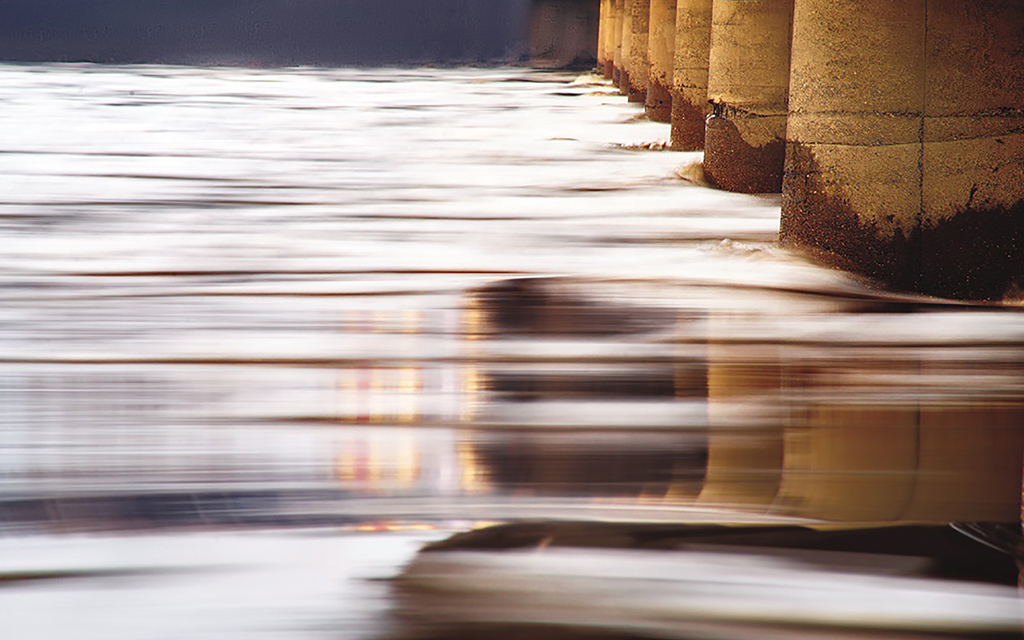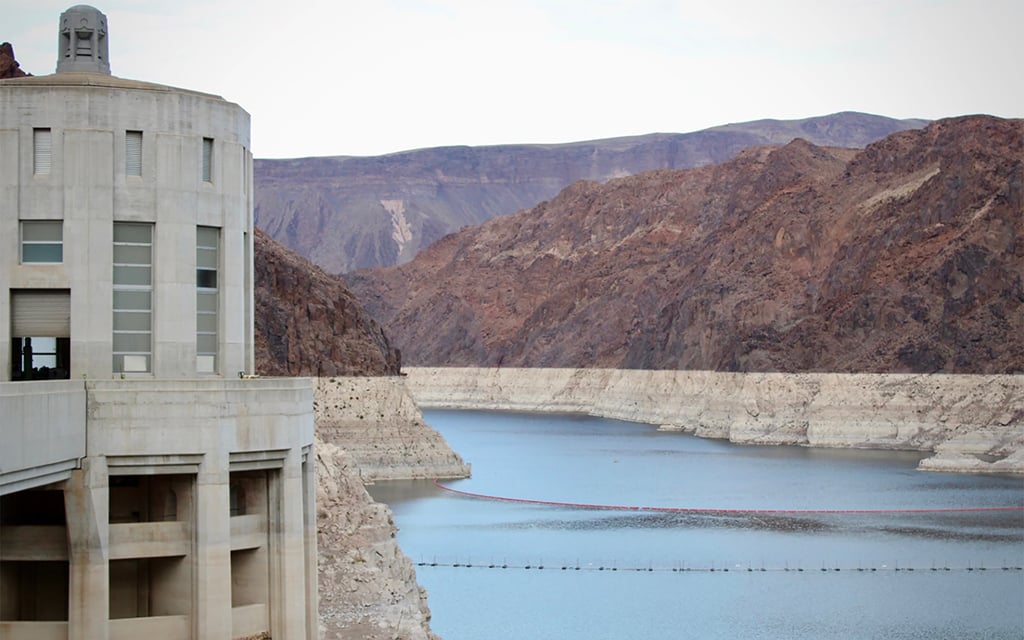High in the mountains above Crested Butte, Colorado, a team of scientists trudges single file through the whiteout, following a chain of orange flags marking the route.
During some portions of the trek, the snowglobe conditions make it hard to tell where the sky ends and the ground starts. But after a few miles, a cluster of thin metal towers – each holding high-tech monitoring equipment – starts to come into focus.
Researchers Eli Schwat and Danny Hogan trek out to this site each day to help answer a mystery: How much snow evaporates into the air before it has a chance to melt?
Every winter, high-altitude snow melts and fills streams, rivers and reservoirs all around the Rocky Mountains. But some years see a big gap between the snow and the water runoff that follows. There is limited data on why the disparity happens, but that gap has far-reaching implications for tens of millions of people who draw water from the Colorado River.
The Colorado River watershed stretches from Wyoming to Mexico, supplying cities like Phoenix and Los Angeles and sprawling fields that contribute to a multibillion-dollar farm economy. After two decades of drought and steady demand, accurate data on the amount of water entering the region’s dwindling supply is crucial for those who manage it.
That’s what Schwat, Hogan and others hope to find out.
“What’s the snow moon in ‘Star Wars’ chapter five? It looks like Hoth,” said Schwat, a University of Washington doctoral student, as he looked at the towers through a tightly cinched jacket hood. “It looks like the rebel base on Hoth.”
Digging for answers
Sublimation is the process of water evaporating into the air before it turns to liquid, changing from a solid to a gas instantly. Jessica Lundquist, an engineering professor at the University of Washington and the head of the sublimation study, said it’s what causes dry ice to give off a spooky fog.
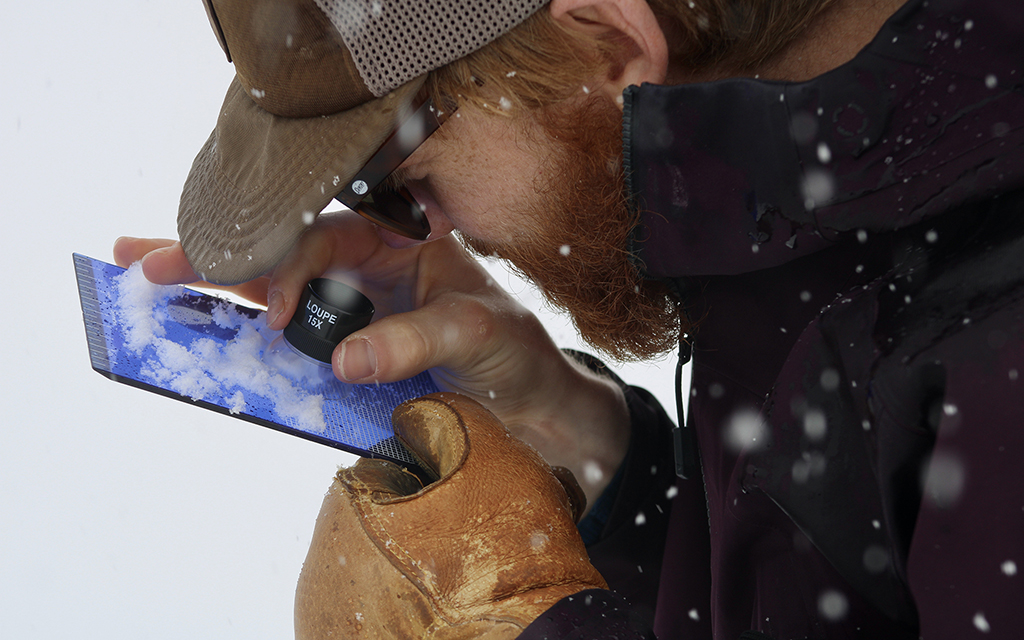
University of Washington researcher Danny Hogan studies snowflakes with a “crystal card” as part of the team researching the question of snow sublimation in the Rockies. (Photo by Alex Hager/KUNC)
Snow sublimation is common in the arid West, which often has the right conditions for the phenomenon – low humidity, high altitude, strong sunlight and dry winds. But water sublimation is much harder to see than the fog from dry ice, which is carbon dioxide turning into a smoke-like vapor.
“This is a process that’s extremely hard to measure,” Lundquist said. “You actually need to measure droplets of water that have turned into vapor that you cannot see. They’re floating around the atmosphere, so you need really highly specialized sensors that can look at that vapor moving around in the atmosphere.”
Those sensors are mounted to the metal towers at the research site, thin metal trusses – some nearly 70 feet tall – holding more than a dozen pieces of monitoring equipment. They measure basic weather data such as wind speed, the amount of water vapor in the air and temperature. Others use lasers and electric signals to get snow depth and soil moisture data. The sensors are posted at different heights to gather data from various distances off the ground.
All those measurements combine to help form an understanding of how much snow evaporates, and why. But data also comes from beneath the snow’s surface.
“Our advisor, Jessica Lundquist, always says that half of the job of being a snow scientist is digging,” Hogan said, shoulder deep in the snow. “So if you’re good at digging, you’ll probably be a good snow scientist.”
Hogan and Schwat took turns with a packable aluminum shovel, tossing chunks of snow over their shoulders until only their eyes and baseball caps were visible above the hole.
“What makes a good pit?” Hogan asked. “Wide enough for you to sit down in comfortably. Very straight, clean sides. You don’t want a messy side. You want it to look really nice. The appearance is very important.”
Once they created a sufficiently pretty pit, they took measurements. One crouched with a set of tools, reading the findings out to his above-ground partner, who jotted numbers on a waterproof notepad. A pair of thermometers – one digital, one analog – are jabbed into the snow. A foldable ruler helps test the firmness of the snow at different distances from the surface, and a custom-built metal scoop called a “density cutter” lets them gather snow for weighing.
“The nice thing about all of these measurements is that there’s probably one specialized tool,” Schwat said. “But everything else you could get at a hardware store.”
Another tool is the “crystal card,” a small sheet of plastic covered in grid lines. Paired with a magnifying glass, it’s a useful backdrop for analyzing snowflake size and shape. Hogan and Schwat climb out of the pit and study a few flakes against the bright blue card, which is about the size of a smartphone. Of 135 terms they could use to describe snowflakes, they choose about 10 to explain the appearances of these ones.
On a near-freezing day with wet snow, the researchers were in a hurry to look at each snowflake before it melted on the card. After inspecting a few in detail, they packed up their gear and began the trek back to their cabin.
A sky-high laboratory
Hogan and Schwat are far from the first scientists to spend a winter in this particular spot. Their winter home base is the Rocky Mountain Biological Laboratory, or RMBL – pronounced “rumble.” The lab, a cluster of wooden cabins built on the site of an abandoned 1800s mining town, is hallowed ground for environmental researchers of all stripes.
Founded by a local biology professor in 1928, RMBL has hosted decades-long studies to determine how flora, fauna and other natural factors behave at high altitude.
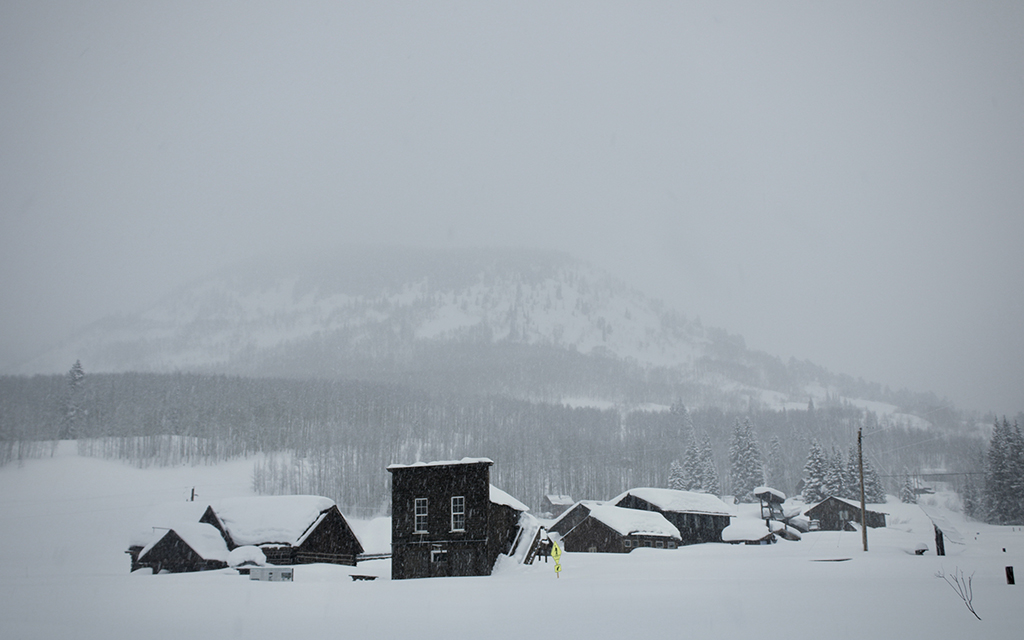
Snow falls on a cluster of cabins at Rocky Mountain Biological Laboratory – RMBL, or “rumble” – in Gothic, Colorado on March 15. The lab was founded in 1928 by a local biology professor and has housed generations of scientists at high altitude. (Photo by Alex Hager/KUNC)
Naturalist billy barr, who prefers his name written in lower case, has meticulously gathered data on plants, animals and snow around RMBL since the 1970s, building a deep understanding about how they’ve changed through the years. In the process, he has quietly become a cult hero to those interested in climate data.
He is not part of the snow sublimation study, but barr said the lab’s high-mountain perch is perfect for gathering that kind of data.
“It will give an indication of what the natural world is doing without as much influence from humans,” barr said. “Especially this time of year when not many people come out here. There’s not many animals out here either because it’s a rough environment to survive in, but it makes a good testing point.”
He has been observing this pristine environment’s snow for decades, and said winters are noticeably shorter and snow is noticeably denser of late.
The site recently lured another big snow research project: Researchers with the Surface Atmosphere Integrated Field Laboratory (SAIL), funded by the U.S. Department of Energy, are also spending the winter in Gothic, Colorado. Shipping containers with dozens of instruments that measure precipitation, clouds, winds and more were brought to the Rocky Mountains after a previous stint in Antarctica.
The SAIL team has been gathering data in Gothic since September 2021, with plans to wrap up this June. Scientists hope the data will give them a better understanding of how water behaves at high altitude.
Every last drop
Researchers have zoomed in on the snow that never becomes runoff mainly because they think there is a lot of it. In some recent winters when snowpack was up to 90% of the yearly average, runoff was as low as 50% of the annual average, according to Colorado State University climate scientist Brad Udall.
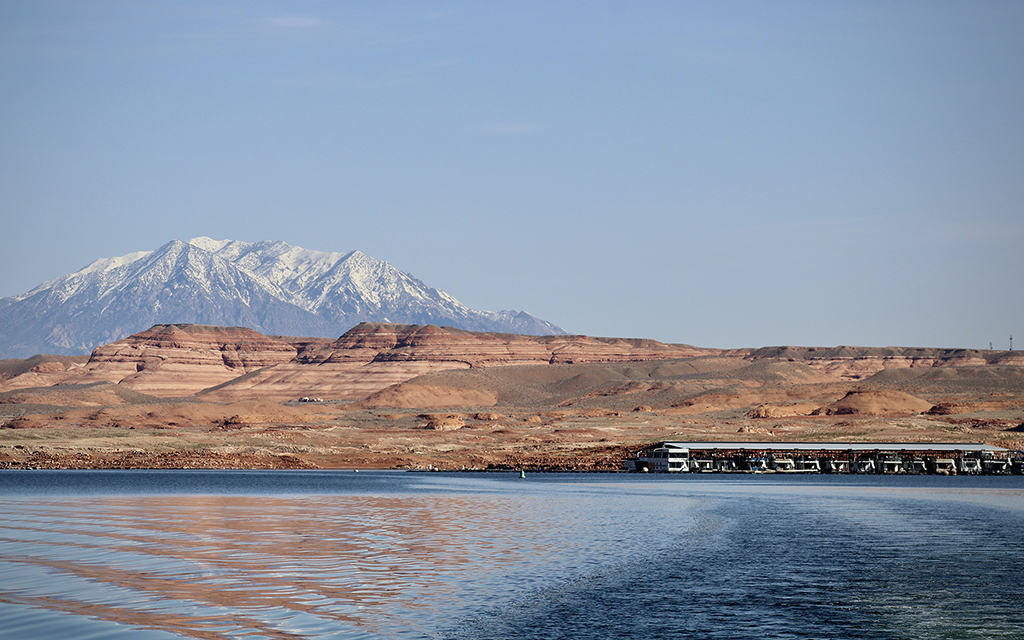
Boats sit in Lake Powell, the nation’s second-largest reservoir, which relies in part on snowmelt from the Rocky Mountains. As water reserves have shrunk, scientists have started to study the gap between snowfall and runoff. (Photo by Alex Hager/KUNC)
Lundquist and her team acknowledge that snow sublimation is probably not the main driver of the snowpack-runoff disparity. Scientists and water managers in recent years have focused on soil moisture: As drought and warmer temperatures bake the dirt and dry it out, the soil soaks up snowmelt like a sponge, meaning less water makes its way to streams and rivers.
Scientists still don’t know how much of an impact drying soil has on a shrinking Colorado River, and they know even less about the role snow sublimation plays. That’s why Lundquist’s study could significantly expand how the West understands its water.
“It’s not just that the word is new or that no one’s ever seen it,” she said. “It’s the magnitude. I think this is one of the first studies to actually put so many instruments in one place to actually quantify the magnitude – and the physics that control the magnitude. People want to know the science to make management decisions on a very scarce resource.”
The snow sublimation study is a relatively niche subgenre of water science, but the parched Colorado River basin needs all the data it can get.
“We know the Colorado River is oversubscribed,” Lundquist said. “Every drop of water is wanted by multiple people. So if you’re off by the number of drops of water you’re promising to somebody, they’re not happy.”
Water managers across the Southwest have to stretch finite water supplies across in a region that has grown at a breakneck pace, with populations growing by hundreds of thousands in just a few decades.
“Our worst-case scenario, from our perspective, is that we have to be in the habit of annually looking to the mountains to see, ‘What is the precipitation?” Phoenix water adviser Cynthia Campbell told KUNC in January.
Campbell said reservoirs should act as a buffer against the fluctuation of dry years and wet years. But with reservoirs shrinking to never-before-seen lows, cities that depend on the Colorado River can only plan one year at a time.
“That’s just not enough time to make changes that you would have to make,” Campbell said. “But that is where we are. So, in some ways it might be our worst nightmare.”
It all comes back to climate change
Earlier this spring, six states agreed on an unprecedented proposal to make significant new cuts to water use based on a plan that accounts for evaporation from Lake Mead, the nation’s largest reservoir. But California balked, and the states remain stuck in a standoff, arguing about who should feel the sting of painful cutbacks.
The Colorado River crisis that has made national headlines is a product of climate change. Environmental metrics show that warmer temperatures are driving major changes to where snow falls, how long it sticks around, and how likely it is to end up in reservoirs. The lean times have forced officials to look to granular data like snow sublimation and soil moisture.
Forecasts have become more difficult in recent years. Patterns that were previously accepted as concrete are now in question because of warmer temperatures – making reliable predictions about snowmelt hard to come by.
“Being able to have a good number to look ahead for the season is really, really important in terms of making important management decisions in the river that affect all of the users,” said Edie Zagona, a hydrology and engineering professor at the University of Colorado Boulder. “Climate change is a major factor in all aspects of the problem with forecasting.”
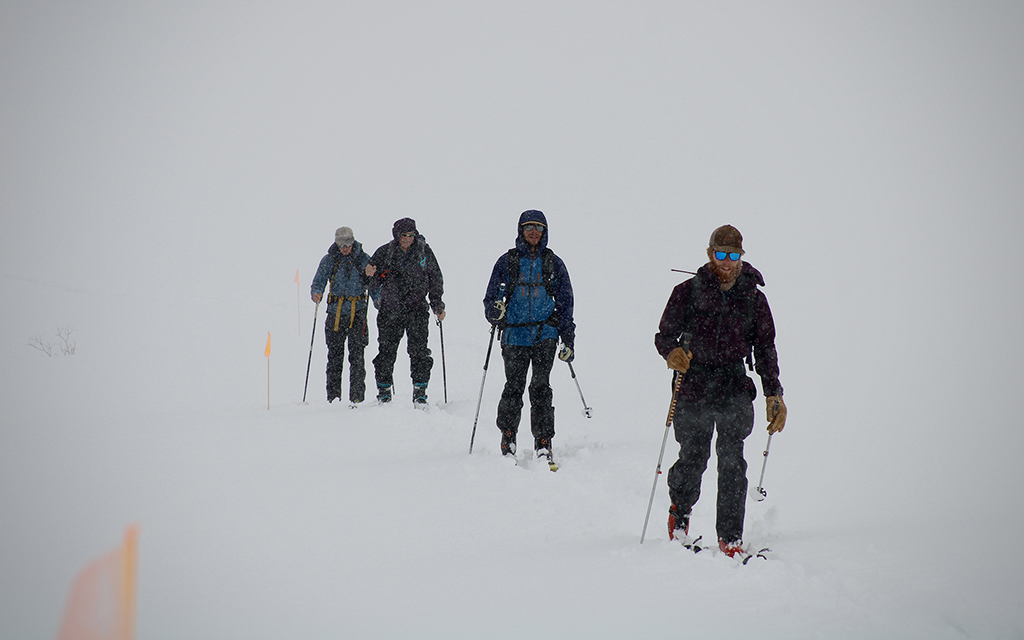
From right, Danny Hogan and Eli Schwat lead a trek toward a snow research site on March 15, 2023. They gather data on snow from nearly 10,000 feet above sea level, helping to add more detail to forecasts of Colorado River water supply. (Photo by Alex Hager/KUNC)
Forecasting problems affect seasonal runoff predictions as well as long-term projections about how much water will be in the Colorado River and its reservoirs. But environmental scientists overwhelmingly agree that water is unlikely to return to the arid West in a significant capacity. Some have gone from calling West’s current water shortage a “drought” to calling it “aridification” – a permanent reset of the baseline for how much water will be in snowpack, rivers and streams each year.
The difficulty in forecasting has driven up demand for new, robust data, which is what motivates the snow sublimation researchers. Lundquist recalled one colleague’s recent words of encouragement.
“He said, ‘Jessica, the bar is low,’” Lundquist said. “‘Learn anything, and we’ll know more than we knew a year ago. You can do this.’ So, it’s both exciting and humbling.”
– This story is part of ongoing coverage of the Colorado River, produced by KUNC, and supported by the Walton Family Foundation.


